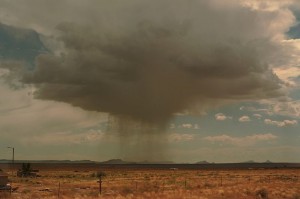FRIDAY, 14 SEPTEMBER 2012
Previous climate change theories have suggested that drier soils contain less moisture able to evaporate into the atmosphere, thereby reducing rainfall and making these areas increasingly arid. However, researchers from the NERC Centre of Ecology and Hydrology led by Chris Taylor have analysed images from storm-tracking weather satellites and conclude that on a smaller scale, the opposite is actually true. The study, published in Nature, obtained surface water and rainfall data from six continents over a decade which revealed that storms were more likely to occur over dry soils."Large-scale atmospheric conditions — for example, a high-pressure system sitting over a continent and suppressing rain — are an important control on whether it will rain or not. What our results suggest is that when the atmospheric situation is marginal — will it rain or won't it? — The wetness of the soil can become important."
Taylor’s findings can be explained by ‘convective precipitation’. On sunny days the land heats the air, creating thermals which reach several kilometres up into the atmosphere. Dry soil makes these thermals stronger, and rain more likely. “We had been looking at storms in Africa and knew that rain clouds there tended to brew up in places where it hadn’t rained in the previous few days.”
Not everyone is convinced by the new data, however, suggesting that in areas of dense vegetation, the climate satellites are unable to measure soil moisture, and that the contribution of vegetation or oceans is not taken into account in the present study.
Taylor and his team state that "it's important to recognize that we are comparing storm statistics between nearby places with the same climate. We are not saying that rain is more likely in the Sahara than the Amazon Basin. We can only see this signal when regions get quite dry, ruling out places like the United Kingdom”.
DOI: 10.1038/nature11377
Written by Joanna-Marie Howes.

